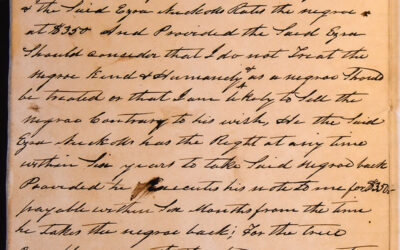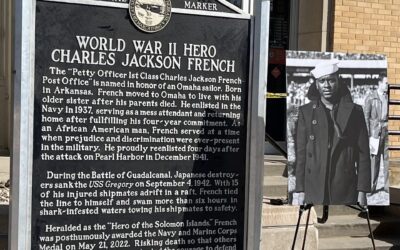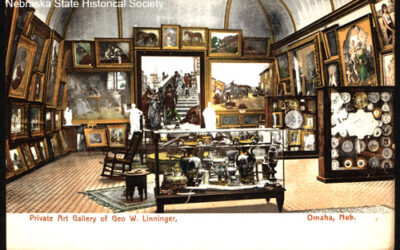Everyone has heard that necessity is the mother of invention. This is best exemplified in times of war, when the necessities of a country are tested to the maximum. During World War II, architects and builders were forced to find many alternatives to common building materials. But few alternatives have shown themselves to be as phenomenal and innovative as the construction of the Lone Oak restaurant in Lincoln.
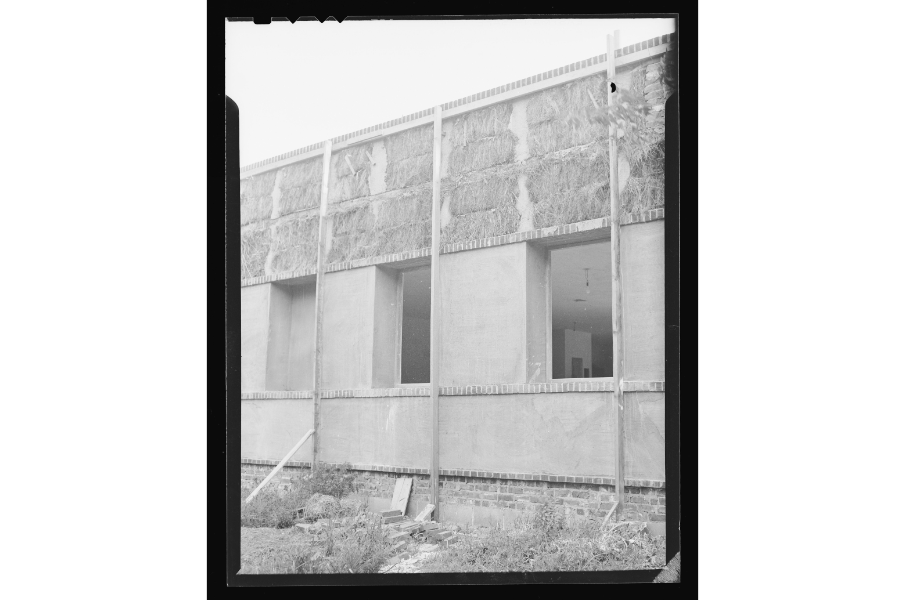
Lone Oak Restaurant, stucco straw bale construction.
Few would guess that beneath its handsome curved walls and stuccoed exterior, the Lone Oak building is constructed of rectangular hay bales. Although the idea sounds primitive, hay-bale buildings have proved themselves more solid and economical than expected. Cheap and a wonderful insulator, straw was the perfect solution to war-time shortages. Completed in 1946, the Lone Oak was a particular achievement because of its two stories, with a surprisingly stable dance floor on the second level. The structure contains other unexpected facets as well, including a flat concrete roof and curiosities about the window substructure that cannot be understood without looking inside the walls. In the Spring 2006 issue of Nebraska History, senior research architect David Murphy explored more interesting aspects of Lone Oak’s construction in his articles “The Lone Oak: Brave and Daring” and “How Did They Do That?”
While its structure alone would have been enough to gain the building its current place as a historic landmark, Lone Oak also has a background of interesting events. The restaurant held the prestigious recommendation of Duncan-Hines, and was also popular as a club. In August of 1958, controversy rocked Lone Oak when its owners Nola Bailey and Tom Bentley were found dead from carbon monoxide poisoning in a nearby cottage. The families of each came into dispute over whether Bentley had been a partner in the business or an employee, along with other details of rights to the valuable restaurant. The case went all the way to the Nebraska Supreme Court, revealing a curious mystery of the debt and secrets of Tom Bentley. Eventually the court sided with the Baileys. In a Spring 2006 article entitled “Tragedy at Lone Oak,” John Carter researched the details of the deaths and court case.
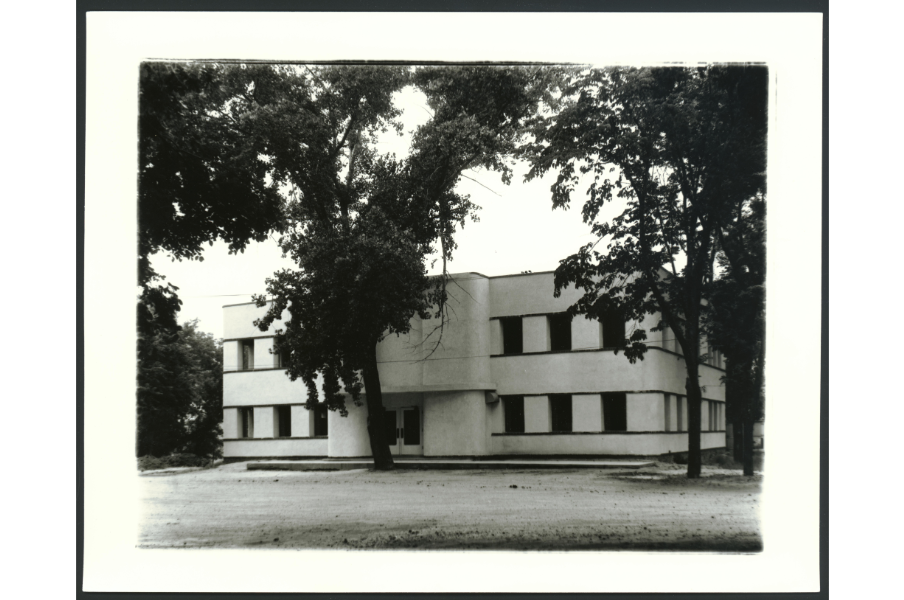
The Lone Oak Restaurant, West “O” St.
Located at 7502 W. O Street, the building has held many new names and restaurants since, including “The One Oak,” “The Lone Elm,” “Thelma’s,” and “El Ranchito.” Unfortunately, however, time and a poorly-cared-for roof have gotten the better of the Lone Oak building. Due to extensive water damage, the straw inside the walls has grown mold; it is likely beyond repair. Owner Todd Reinhardt has plans to demolish the building next year, using the land to expand his business. Although it is tragic to lose such a historic place, hopefully tearing down the structure will provide insight into its unconventional construction, and reveal information to improve current designs for straw-bale architecture.
-Joy Carey, Editorial Assistant, Publications

